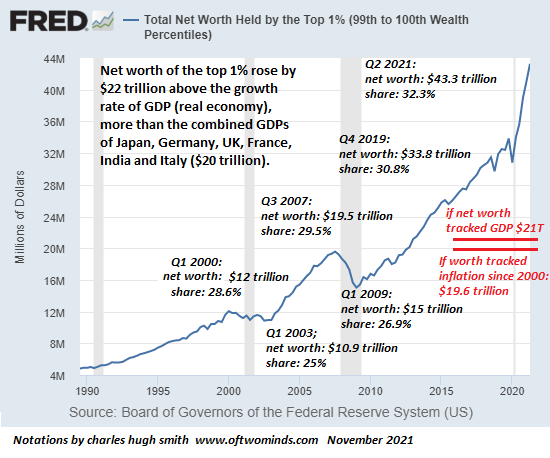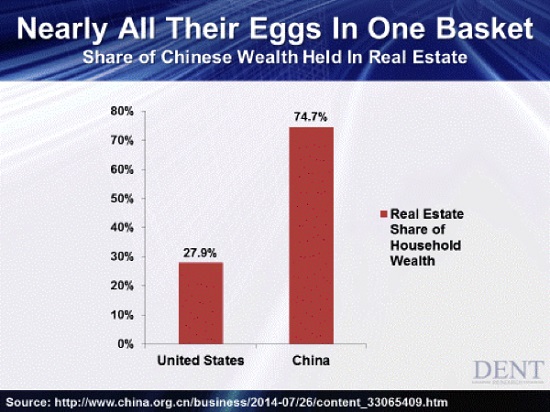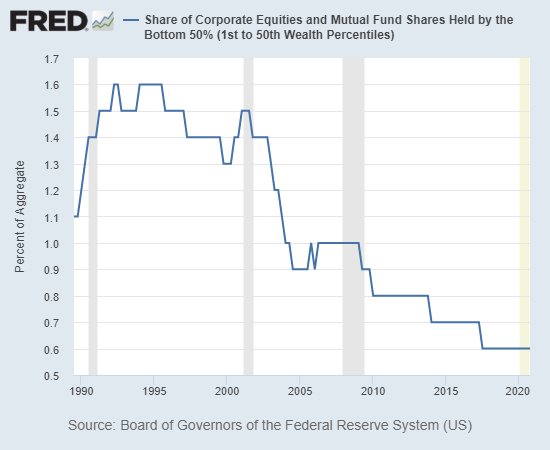The opportunity to lower our exposure to risk is always present in some fashion, but embracing this opportunity becomes critical when precarity and change-points rise like restless seas. The Chinese characters that comprise the equivalent of “crisis” are famously–and incorrectly–translated as “danger” and “opportunity.” This mis-translation has reached the peculiar prominence of being repeated often enough to be taken as accurate, but according to Wikipedia and other sources, the more accurate translation is “precarious” plus “change point.” (Chinese speakers may be able to shed even more light on the characters’ shades of meaning.) The American attachment to “crisis” equaling “danger” and “opportunity” is easy to understand: the American “can do” culture is
Topics:
Charles Hugh Smith considers the following as important: 5.) Charles Hugh Smith, 5) Global Macro, Featured, newsletter
This could be interesting, too:
Nachrichten Ticker - www.finanzen.ch writes Die Performance der Kryptowährungen in KW 9: Das hat sich bei Bitcoin, Ether & Co. getan
Nachrichten Ticker - www.finanzen.ch writes Wer verbirgt sich hinter der Ethereum-Technologie?
Martin Hartmann writes Eine Analyse nach den Lehren von Milton Friedman
Marc Chandler writes March 2025 Monthly
|
The opportunity to lower our exposure to risk is always present in some fashion, but embracing this opportunity becomes critical when precarity and change-points rise like restless seas. The Chinese characters that comprise the equivalent of “crisis” are famously–and incorrectly–translated as “danger” and “opportunity.” This mis-translation has reached the peculiar prominence of being repeated often enough to be taken as accurate, but according to Wikipedia and other sources, the more accurate translation is “precarious” plus “change point.” (Chinese speakers may be able to shed even more light on the characters’ shades of meaning.) The American attachment to “crisis” equaling “danger” and “opportunity” is easy to understand: the American “can do” culture is fond of optimistic calls to action (“when life hands you lemons, make lemonade,” etc.) and so crisis presenting opportunity fits this perfectly. As for the danger: that’s the necessary impetus to grab the opportunity. Lost in this cheerleading of great opportunities just waiting beneath an oil slick of danger is the possibility that the precariousness of imminent change offering sure-fire opportunities might be wishful thinking. There is no guarantee that “crisis” is only 10% danger/precarity and 90% unalloyed opportunity; it might just as well be 90% precarity and 10% extremely risky opportunity where the odds of failure exceed those of success. My preferred portmanteau of crisis is risk and opportunity because risk is the essential yin to opportunity’s yang: every opportunity to succeed is equally an opportunity to fail. |
|
| America’s “can do” culture processes this potential for failure in two ways:
1. Since “He who will not risk cannot win” (John Paul Jones), and winning is the goal, then risk is just part of the package. 2. Glorify failure as the essential stepping stone to success: “Fail often, fail fast” (or as coined by John C. Maxwell, “Fail early, fail often, but always fail forward”). While overcoming repeated failures is indeed the path of progress, it is not teleological, meaning that failing often and failing fast does not necessarily end in success; it may end in a failure so complete that there are no longer the resources available to recover. Nobody talks about this possibility, of course, as it runs counter to “can do” optimism. Combining precariousness and an unstable point of profound change gets us closer to a realistic assessment of the present moment, for it captures the reality that doing nothing isn’t a guarantee of safety. Hoping that doing nothing is the way to avoid risk is to misunderstand precarity and instability: doing nothing may the quickest pathway to collapse. In my analysis, the large-scale structures of globalized supply chains, financialization, debt-funded speculation and the destabilizing consequences of extreme inequality are all perched on the precarious edge of fundamental change. We don’t control these large-scale forces, of course, but we do control our response to their phase-shift / decay / collapse. This makes risk and opportunity personal. If we grasp that doing nothing might be disastrous as taking bold action, we get close to the nature of risk and the inherent uncertainty of the outcome, no matter what course of action we choose. Doing nothing can lead to collapse, but so can bold action. That said, the lower one’s dependency on precarious systems, the lower one’s exposure to risks we can’t control. The lower one’s consumption, the lower one’s dependency. The lower one’s debt (with zero debt being the lowest risk position), the lower one’s exposure to the risk of bad things happening financially. The lower the population density, the lower the risk of herd mentality running amok. The greater the quantity of food grown within walking distance, the lower the risk of starvation. These observations are not cheerleading the embrace of risk and failure as the sure-fire pathway to success; the goal here is to lower the risk of failure by reducing exposure to vulnerabilities, dependencies and fragile points of precarity over which we have no control. Even if we can’t reduce our exposure to risk in this moment, we can brainstorm Plan B and Plan C–potential responses to risks rising and opportunities diminishing. The opportunity to lower our exposure to risk is always present in some fashion, but embracing this opportunity becomes critical when precarity and change-points rise like restless seas. |
 . |
Tags: Featured,newsletter








